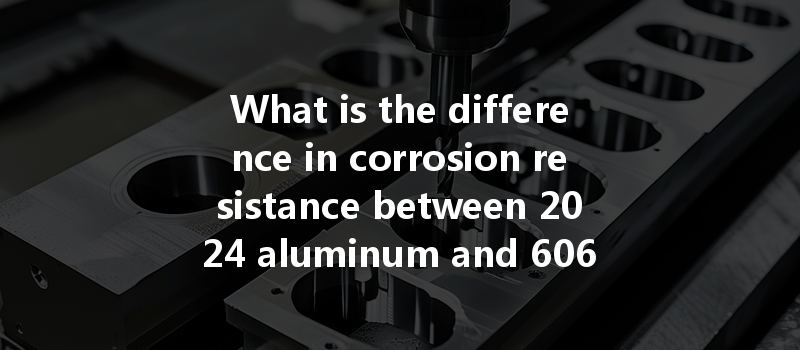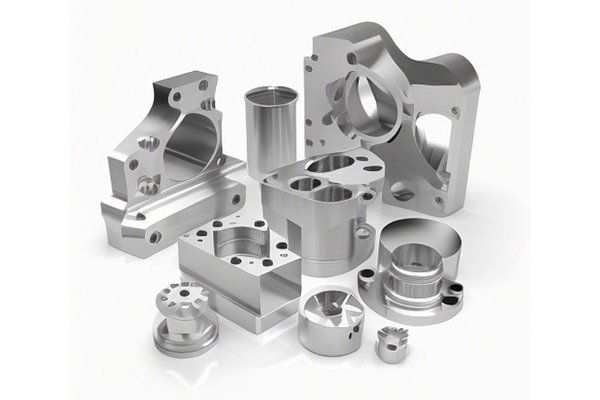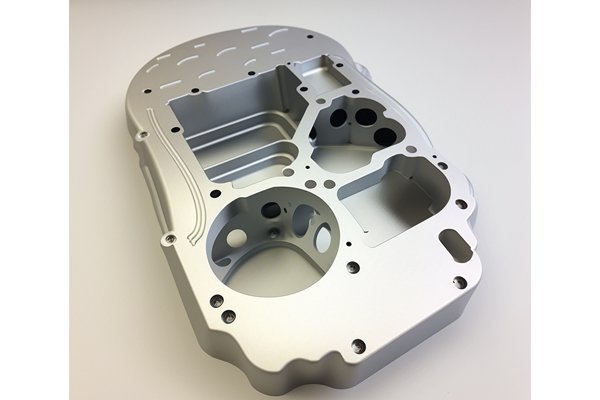*
Did you know that aluminum is the most widely used non-ferrous metal in the world? According to estimates, global aluminum production reached about 60 million metric tons in 2021, a figure that continues to grow as industries seek lightweight, durable materials. Among the various aluminum alloys available, 2024 and 6061 stand out due to their unique properties and applications, particularly in the realm of CNC (Computer Numerical Control) machining.
The question that often arises for engineers, manufacturers, and designers is: which of these alloys offers better corrosion resistance for specific applications? Understanding the differences in corrosion resistance between 2024 aluminum and 6061 aluminum is crucial for making informed decisions that impact the durability and longevity of parts. In this blog, we will dive deep into both alloys, exploring their compositions, characteristics, performance in CNC turning, and how to choose the right alloy based on corrosion resistance and application.
—
—
The Basics of Aluminum Alloys
Aluminum is known for its lightweight, strength, and resistance to corrosion. However, pure aluminum is too soft for practical applications. To enhance its properties, aluminum is alloyed with other elements such as copper, magnesium, silicon, and zinc. Each alloy type offers unique mechanical characteristics and suitability for different applications.
Alloy Designations and Their Significance
In the world of aluminum, alloys are identified by a four-digit numerical code. The first digit indicates the principal alloying element; for example, 2xxx refers to copper, and 6xxx refers to magnesium and silicon. The following digits signify specific modifications of the base alloy. This system helps identify the characteristics and applications of each alloy, making it easier for manufacturers to choose the appropriate material for their needs.
—
Composition and Mechanical Properties
2024 aluminum is primarily alloyed with copper, which contributes to its high strength. The typical composition includes about 90% aluminum, 4.4% copper, and smaller amounts of manganese, silicon, magnesium, and zinc. Its ultimate tensile strength can reach up to 570 MPa (82,000 psi), making it an excellent choice for applications requiring high strength-to-weight ratios.
Strengths and Weaknesses
One of the major strengths of 2024 aluminum is its excellent fatigue resistance, which is crucial in aerospace applications where parts are subjected to repeated stress. However, it is not as corrosion-resistant as other alloys, particularly in marine environments.
Corrosion Resistance Factors
The corrosion resistance of 2024 aluminum is affected primarily by its copper content. While it performs well in moderate environments, its susceptibility to pitting corrosion in severe settings necessitates protective coatings or anodizing.
Common Applications

2024 aluminum is commonly used in aircraft structures, military vehicles, and high-stress components where strength is critical. Its applications are often in parts that do not require extensive exposure to corrosive environments.
—
Composition and Mechanical Properties
6061 aluminum is one of the most versatile and widely used aluminum alloys. It contains magnesium and silicon, typically comprising about 97.5% aluminum, 1.0% magnesium, and 0.6% silicon. Its properties include good mechanical strength and excellent corrosion resistance, with an ultimate tensile strength of approximately 310 MPa (45,000 psi).
Strengths and Weaknesses
6061 aluminum boasts a good balance of strength and workability, making it suitable for machining and welding. Its lower strength compared to 2024 is offset by its superior resistance to corrosion, particularly in atmospheric conditions.
Corrosion Resistance Factors
6061 aluminum exhibits excellent corrosion resistance due to the formation of a protective oxide layer. This makes it ideal for marine environments, industrial applications, and areas where exposure to moisture is prevalent.
Common Applications
This alloy is commonly used in structural applications, automotive components, and marine structures, owing to its balance of strength and corrosion resistance.
—
Corrosion Mechanisms Affecting Aluminum
Corrosion in aluminum occurs primarily through electrochemical reactions. Factors that influence corrosion include the presence of moisture, salinity in marine environments, and the type of alloying elements. Understanding these factors is essential for effective alloy selection.
Comparative Corrosion Resistance of 2024 vs. 6061
When comparing the corrosion resistance of 2024 and 6061 aluminum, the latter performs better under most conditions. 6061’s oxide layer offers ample protection against corrosion, while 2024’s higher copper content makes it more prone to pitting and galvanic corrosion.
Effects of Surface Treatments on Corrosion Resistance
Both alloys can benefit from surface treatments that enhance their corrosion resistance. Processes such as anodizing, painting, or applying protective coatings can significantly improve the longevity and performance of both 2024 and 6061 aluminum in corrosive environments.
—
CNC Machining Process Overview
CNC machining is a manufacturing process that uses computer-controlled tools to remove material from a workpiece. This allows for high precision and repetitive production, making it ideal for creating complex parts from aluminum alloys.
Machinability of 2024 vs. 6061 Aluminum
6061 aluminum generally exhibits better machinability compared to 2024, primarily due to its work hardening characteristics and uniformity. It allows for faster machining speeds and a more extended tool life.
Best Practices for CNC Turning of Aluminum Alloys
Surface Finish and Quality Considerations
Achieving a high-quality surface finish is crucial for components exposed to harsh environments. Employing proper tooling and techniques while machining can ensure that the surface quality meets the required specifications for subsequent treatment processes.
—
Key Considerations for Alloy Selection
When choosing between 2024 and 6061 aluminum, several factors must be taken into account:
Performance vs. Cost Analysis
A comprehensive cost-analysis approach should encompass not only the upfront material costs but also the long-term operational expenses associated with maintenance, durability, and performance.
Real-World Case Studies
Studying case examples where one alloy outperforms the other can help clarify decisions:
—
Advances in Aluminum Alloy Technology
The aluminum industry continuously invests in research and development to create newer, stronger, and lightweight alloys. Innovations include hybrid materials and composite technologies that could further enhance performance in demanding applications.
Sustainable Practices in Aluminum Manufacturing
As more industries focus on sustainability, the aluminum sector is exploring recycled materials and lower-energy manufacturing processes. The push for sustainable practices will likely impact future alloy compositions and availability.
—
In summary, understanding the differences in corrosion resistance between 2024 aluminum and 6061 aluminum is vital for making informed decisions in CNC turning applications. While 2024 offers exceptional strength and fatigue resistance suited for high-stress environments, 6061 stands out due to its corrosion resistance and versatility in various applications.
By considering factors like the specific environment in which the material will be used, best practices in machining, and future trends, manufacturers can select the most appropriate alloy to meet their needs effectively. The significance of this knowledge cannot be overstated, as it directly influences the performance, longevity, and cost-effectiveness of the components produced in various industries.
As industries evolve and the demand for lightweight, durable materials grows, the importance of material selection based on corrosion resistance will remain a critical consideration for engineers and manufacturers alike. The right choice ensures not just optimal performance but also contributes to sustainability and cost-effectiveness in production processes.






